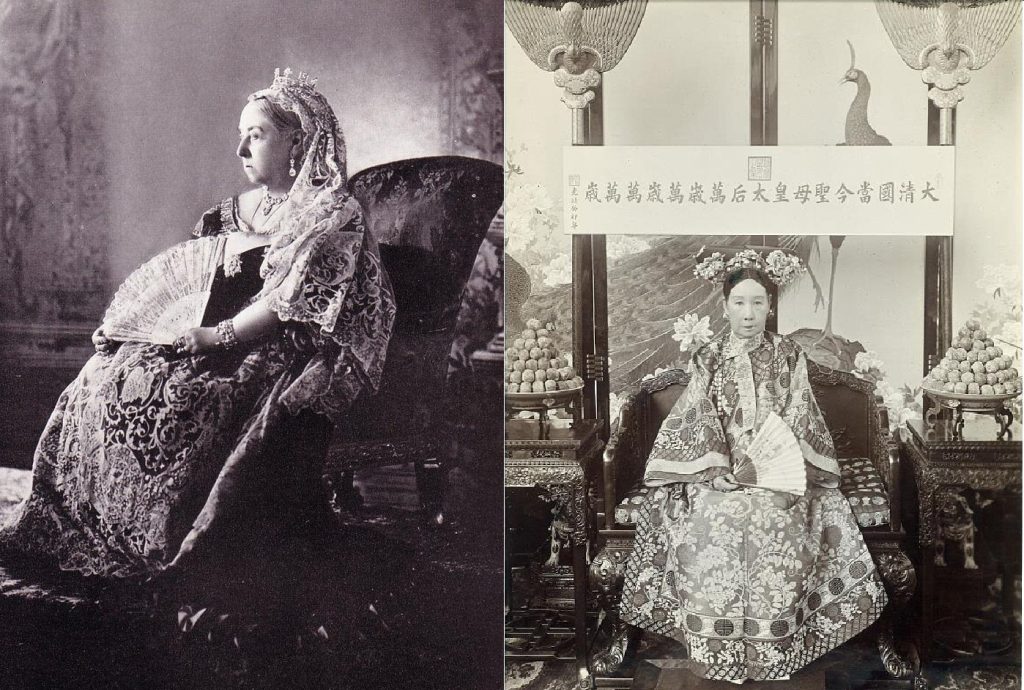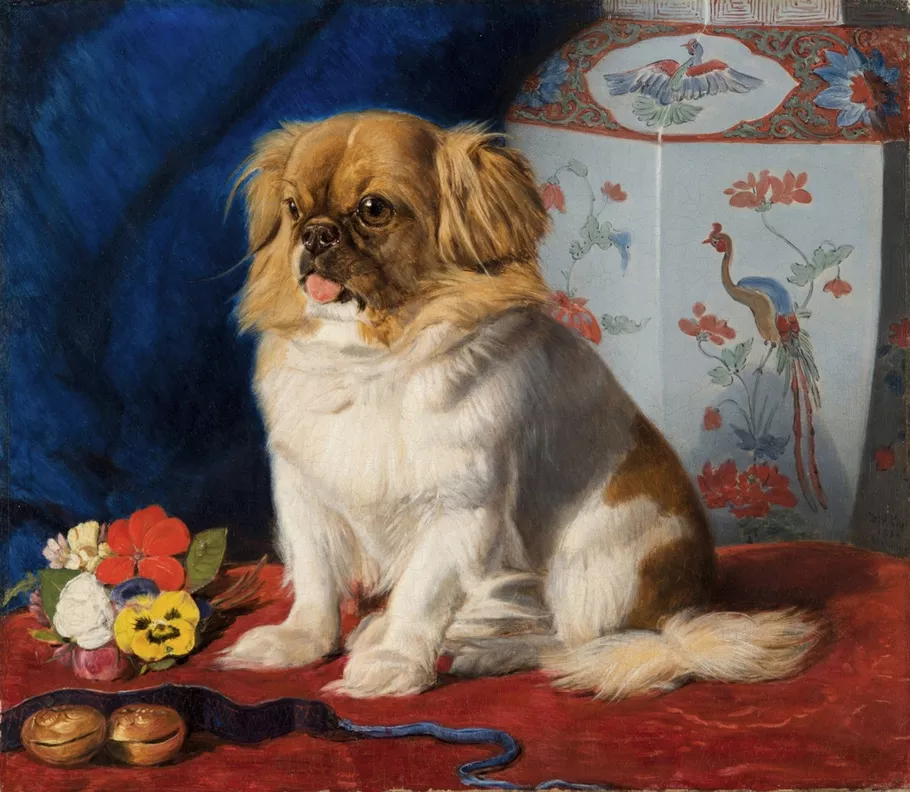text by Maria Szafrańska-Chmielarz
“Do you know, I have often thought that I am the most clever woman that ever lived and others cannot compare with me. Although I have heard much about Queen Victoria and read a part of her life which someone has translated into Chinese, still I don’t think her life was half so interesting and eventful as mine”, says Empress Dowager Cixi (1835-1908) in Two Years in the Forbidden City (1911) penned by Princess Der Ling, Cixi’s favourite. Although the authenticity of the memoirs is still contested, as is the actual identity of the authoress, drawing a comparison between Queen Victoria and Empress Cixi does not seem to be unwarranted. As two female rulers living in the same era, they both became symbols of their times – in the contemporary consciousness Victoria functions as a picture of conservatism, of prudish conduct and cruelty of the period named after her, while Cixi shoulders the blame for the fall of the Qing dynasty, remembered mostly for the financial excess, immortalised in the form of marble boats and her lavish clothes.
Although separated by miles and grand conflict of interests (Opium Wars of 1839-1842 and 1856-1860), these two women might have been closer to each other than they would both probably care to admit. Eternal widows who lost their husbands in the year 1861, both Victoria and Cixi retreated into shadows for a while – one to become an icon of mourning, the other to become a regent aiding her five years old son, but even though their influence over the events shaping their respective countries seems to be minimal, their impact on the cultures and mind-sets remains a topic of discussion to this day.

Their openness to new inventions, such as photography, is the subject of Jacqueline Quint’s article “A Picture Worth A Thousand Words: Comparing Photographs of Queen Victoria and Dowager Empress Cixi” (2020), which discusses the independently created and yet similar aims for having their photographs taken, showcasing the difficult roles Victoria and Cixi had to play – of a strong monarch, and of a good woman at the same time, both hard to categorise and appraise. Victoria waltzed with Albert and invited her subjects to behold and emulate her marital and familial happiness, Cixi created schools for women; Victoria was crowned the Empress of India, Cixi earned herself the title of a She-Dragon (Keith Laidler’s The Last Empress: The She-Dragon of China from 2003) for trying to keep afloat a country that has been ravaged by foreign influences and concessions.
Although the two women had never met, looking at the times they lived in and their lifestories, it does not seem surprising that a question of ‘what would happen if they had?’ attracts both scholars and fiction writers. Min Anchee , the author of Empress Orchid (2004) and The Last Empress (2007), in her duology (fittingly first published in Great Britain) has Cixi not only read about Victoria but also long for her friendship, or at least understanding – for who else would fear how their history would be written just because they were women ruling in the times of change?

Even the most renowned biography of Cixi to date, Jung Chang’s Empress Dowager Cixi: The Concubine Who Launched Modern China (2013) draws a few lines of connection between the two – Victoria’s pet Pekinese Lootie immortalised in a painting was, according to Chang, brought from the the attack and subsequent plunder of the Imperial Palace in 1860 and given to Victoria by Captain Hart Dunne; an unintended gift from one capital to the other.
While the documented history did not offer any chances for these two great rulers to meet and understand one another, neo-Victorian fiction might open up new meeting opportunities – I certainly look forward to seeing such a work in not that distant future.
